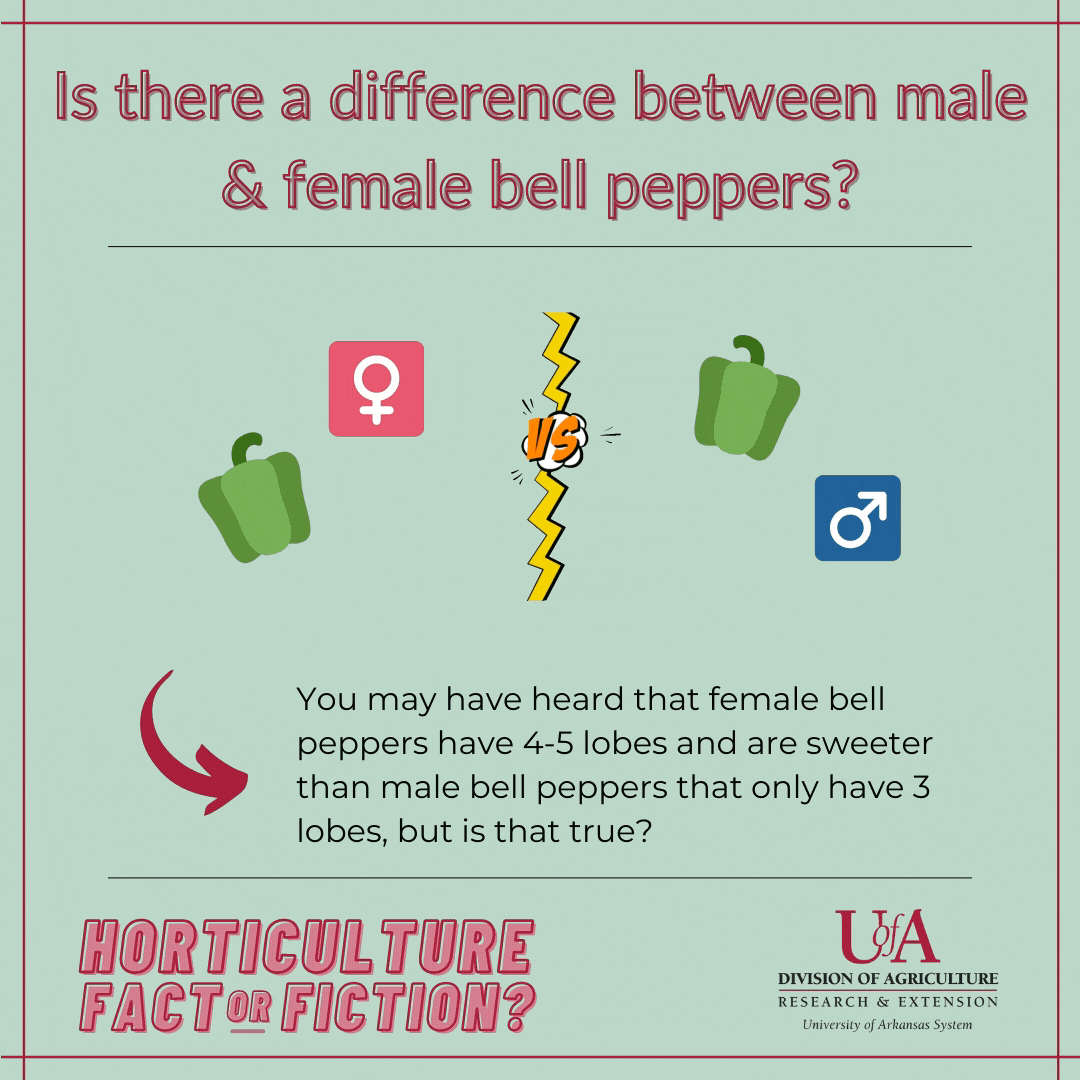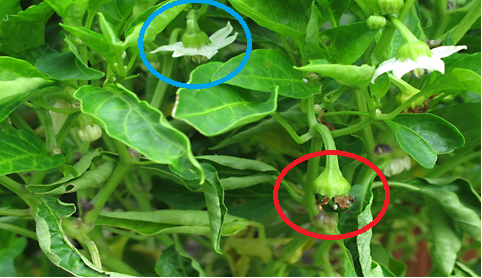
Is there a difference between male and female bell peppers?
You may have heard that female bell peppers have 4-5 lobes and are sweeter than male bell peppers that only have 3 lobes, but is that true?

Answer: No. There is no such thing as a male or female pepper fruit!
Quick take: The myth goes like this: “male” bell peppers have three lobes (or bumps on the bottom of the fruit) and are more bitter, while “female” bell peppers have four to five lobes, have more seeds, and are sweeter tasting.
Plants don’t always follow human norms of separate male and female individuals. Most vegetable plants have both male (pollen producing) and female (ovary) parts within the same flower on a plant. After pollination (which is when pollen is moved by wind, bees or other action to the female parts of the flower) the ovary starts to enlarge and develop into the fruit which contains the seeds (ovules).
The explanation:
- The flowers of peppers, tomato, eggplant and many other common fruits and vegetables are called “perfect” meaning they contain both the male and female parts within the same flower.
- A fruit is just a ripening or ripened ovary containing the seeds, which are the result of the male and female gametes combining to produce the next generation (seeds).
- The real reason some bell peppers have more lobes than others is largely the result of the variety but can also be influenced by growing conditions.
- Bell pepper sweetness is determined by variety, and also how “ripe” the fruit is. Bell peppers that are allowed to ripen past being green and mature to yellow, orange or red will be sweeter.
- Bell pepper seed number is determined by variety, growing conditions and how many ovules were successfully fertilized during pollination.

In this image you can see both pepper flowers (circled in blue at the top) and very early maturing pepper fruit (circled in red near the bottom).
This Photo by Downtowngal is licensed under CC BY-SA